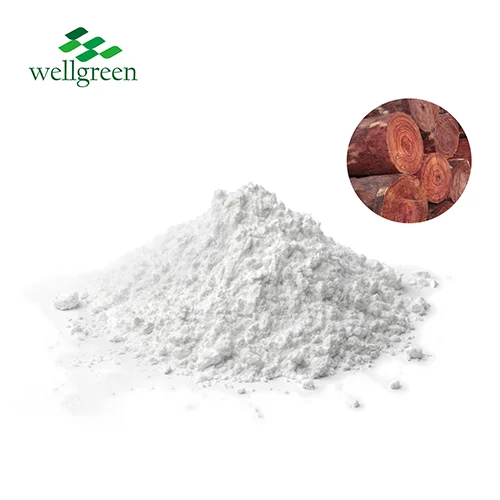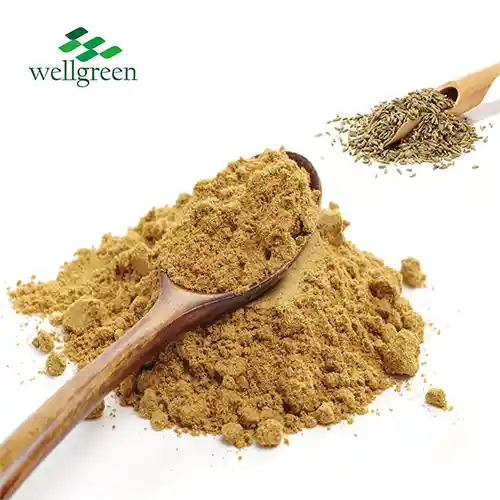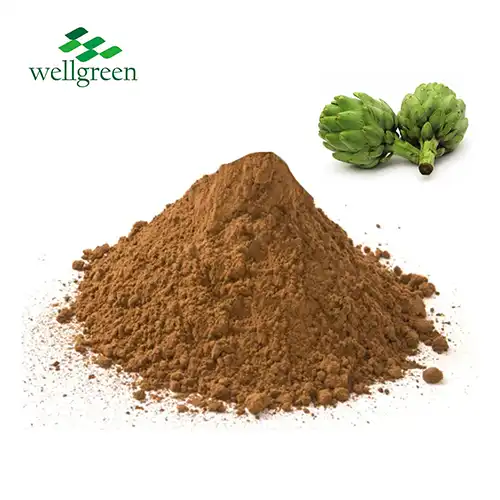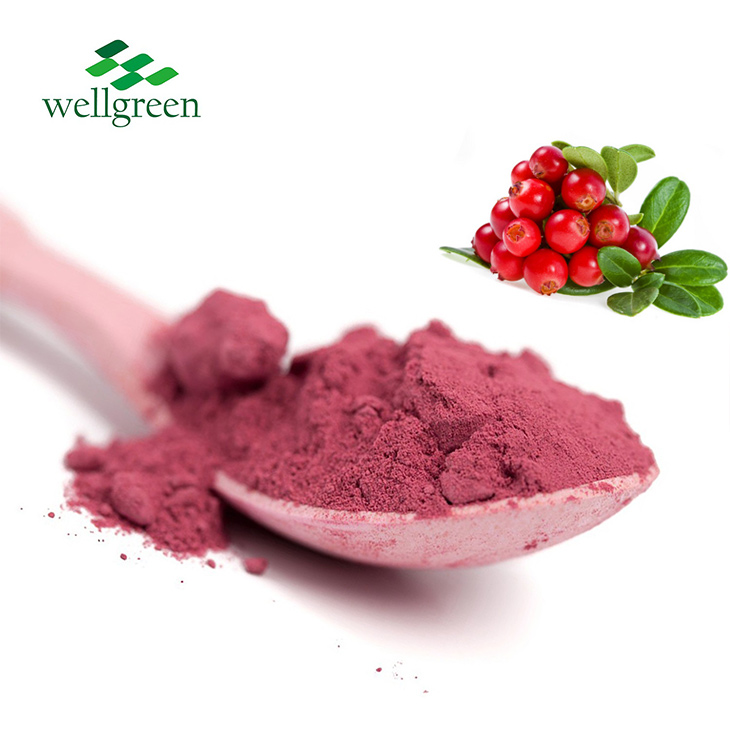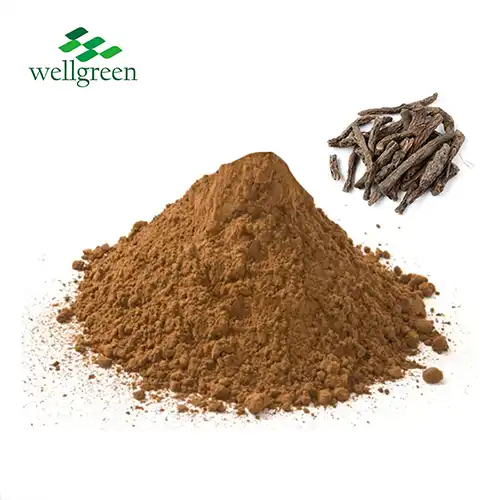Is Trichosanthes Kirilowii Edible?
2024-07-02 14:04:34
Trichosanthes kirilowii, commonly known as Chinese cucumber or Gua Lou, is a plant native to East Asia. It has been traditionally used in herbal medicine and culinary practices for centuries, valued for its potential health benefits. The fruit, seeds, and roots are often incorporated into various remedies aimed at treating respiratory conditions, reducing inflammation, and aiding digestion. Despite its long history of use, the edibility and safety of Trichosanthes kirilowii as a food source remain subjects of interest and scrutiny, with ongoing research into its potential toxicities and medicinal properties. In this blog post, we will explore the edibility of Trichosanthes kirilowii, particularly in relation to Trichosanthes kirilowii root extract.
Is Trichosanthes Kirilowii Root Extract Safe for Consumption?
 Trichosanthes kirilowii root extract is frequently used in traditional Chinese medicine (TCM) for its purported therapeutic benefits. The extract is believed to possess various medicinal properties that may promote human health. However, concerns about its safety for consumption, especially in unregulated doses or forms, have arisen, necessitating a closer examination of its chemical composition and potential health effects.
Trichosanthes kirilowii root extract is frequently used in traditional Chinese medicine (TCM) for its purported therapeutic benefits. The extract is believed to possess various medicinal properties that may promote human health. However, concerns about its safety for consumption, especially in unregulated doses or forms, have arisen, necessitating a closer examination of its chemical composition and potential health effects.
Research indicates that Trichosanthes kirilowii root extract contains bioactive compounds such as triterpenoid saponins and cucurbitane glycosides, which contribute to its medicinal properties. These compounds have demonstrated anti-inflammatory, antioxidant, and immune-modulating activities in preclinical studies, suggesting potential benefits for conditions ranging from inflammation to immune support.
Despite these promising health benefits, the consumption of Trichosanthes kirilowii root extract is not without risks. Excessive intake or improper preparation of the extract can lead to adverse effects such as gastrointestinal disturbances, allergic reactions, or interactions with medications. The potency of the bioactive compounds may vary depending on the method of extraction and dosage, which can complicate safe consumption practices.
Given these potential risks, it is crucial to approach the use of Trichosanthes kirilowii extract with caution. Consulting healthcare professionals or herbalists knowledgeable in TCM is essential before using the extract for medicinal purposes. These experts can provide guidance on appropriate dosages, preparation methods, and potential interactions with other treatments or medications. In summary, while Trichosanthes kirilowii root extract offers potential health benefits, its safety for consumption requires careful consideration and professional advice.
What Are the Culinary Uses of Trichosanthes Kirilowii Root?
In addition to its medicinal applications, Trichosanthes kirilowii root has a diverse culinary history in various Asian cuisines. Known for its mildly sweet taste and crisp texture, the root is a versatile ingredient commonly sliced and added to soups, stir-fries, or salads. Its popularity in traditional Chinese cooking stems from its purported ability to cool and detoxify the body, making it especially valued during hot summer months.
Trichosanthes kirilowii root is often prepared using methods like blanching or quick stir-frying to preserve its crunchiness and nutritional benefits. These techniques not only maintain its texture but also retain its inherent flavors and health-promoting properties. Its adaptability allows it to complement a wide range of ingredients, enhancing both the taste and nutritional profiles of dishes.
In regions where, traditional Chinese medicine (TCM) holds significant influence, Trichosanthes kirilowii root is more than just a culinary ingredient—it is integral to dietary therapies aimed at improving overall health and well-being. Here, it is used not only for its culinary appeal but also for Trichosanthes kirilowii extract’s potential therapeutic effects, reinforcing its status as a multifaceted component of both cuisine and medicine.
While Trichosanthes kirilowii root adds flavor and texture to dishes, its consumption is often intertwined with cultural practices and beliefs associated with TCM. This dual role underscores its importance not only in enhancing culinary experiences but also in contributing to holistic approaches to health and wellness in Asian cultures.
Can Trichosanthes Kirilowii Root Extract Aid in Skin Care?
 Trichosanthes kirilowii root extract is garnering attention beyond its traditional uses for potential skincare benefits. Known for its anti-inflammatory and antioxidant properties, the extract is increasingly seen as a promising ingredient in skincare formulations aimed at addressing various skin concerns like acne, eczema, and signs of aging.
Trichosanthes kirilowii root extract is garnering attention beyond its traditional uses for potential skincare benefits. Known for its anti-inflammatory and antioxidant properties, the extract is increasingly seen as a promising ingredient in skincare formulations aimed at addressing various skin concerns like acne, eczema, and signs of aging.
Research suggests that applying Trichosanthes kirilowii root extract topically can help mitigate inflammation, shield the skin from oxidative stress, and stimulate skin regeneration. These properties are particularly beneficial in calming irritated skin, reducing redness, and potentially slowing down aging processes by combating harmful free radicals. As a result, cosmetic and skincare companies are incorporating Trichosanthes kirilowii root extract into creams, serums, and masks, promoting it for its purported skin-soothing and anti-aging effects.
Despite anecdotal evidence supporting its efficacy, it's crucial to note that scientific backing for Trichosanthes kirilowii root extract in skincare is still developing. Most studies are preliminary, and more comprehensive research, including clinical trials and long-term safety assessments, is necessary to substantiate these claims fully. Establishing clear guidelines for the safe and effective use of Trichosanthes kirilowii root extract in skincare products will require rigorous scientific investigation to ensure its benefits are validated and its usage remains safe.
While promising, consumers and skincare professionals alike should approach products containing Trichosanthes kirilowii root extract with informed caution. Consulting dermatologists or skincare experts can provide valuable guidance on incorporating such ingredients into skincare routines, ensuring both efficacy and safety in addressing individual skin concerns.
Conclusion
In conclusion, Trichosanthes kirilowii root extract presents intriguing potential in both traditional medicine and culinary traditions, yet its safety and effectiveness demand thorough evaluation. Whether consumed internally for its medicinal properties or applied topically in skincare products, it is crucial to seek guidance from healthcare professionals. Understanding the extraction process, dosage considerations, and potential interactions is vital to manage any associated risks. As ongoing research delves deeper into Trichosanthes kirilowii's bioactive compounds and therapeutic applications, its role continues to evolve. Scientists are exploring its anti-inflammatory, antioxidant, and other health-supporting properties, aiming to validate its benefits through rigorous clinical trials. This ongoing scientific scrutiny underscores the need for cautious optimism in integrating Trichosanthes kirilowii into health and skincare regimens.
References
1. Zhang, Y. et al. (2019). Pharmacological effects of Trichosanthes kirilowii and its bioactive components. Frontiers in Pharmacology, 10, 841.
2. Li, X. et al. (2020). Traditional uses, phytochemistry, pharmacology and toxicology of Trichosanthes kirilowii Maxim.: A review. Journal of Ethnopharmacology, 249, 112426.
3. Kim, H. et al. (2018). Cosmetic applications of herbal extracts. Cosmetics, 5(3), 46.

